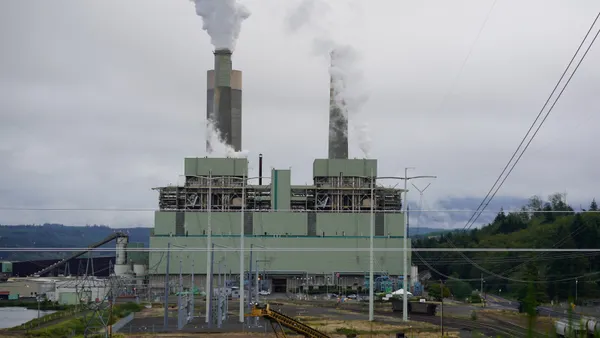Dive Brief:
- New York will likely have sufficient electricity supplies to meet peak demand this winter, the state's grid operator said on Tuesday, though generators may be challenged by high gas prices, and plants with dual-fuel capabilities are beginning the season with less oil on hand than is typical.
- The New York Independent System Operator (NYISO) anticipates peak demand this winter will reach 24,025 MW, about 6.6% higher than last winter. Extreme weather could push peak demand to 26,230 MW, but officials say they expect to have more than 42,000 MW of power resources available.
- In all but the most extreme scenarios, New York expects to have ample capacity reserves for the coldest months. But following blackouts in Texas and the Southwest last winter, the Northeast grid operator now includes "once in a century" scenarios in its risk assessments and experts say the more cautious approach is now common across the country.
Dive Insight:
New York's electric grid is a summer peaking system, so winter demand conditions are unlikely to challenge generators. But grid operators are changing how they assess risk to account for climate change extremes, and the NYISO warned that tighter capacity margins are possible under some scenarios.
"We've updated and augmented our readiness assessment this year to consider some of the extreme weather events that we've seen in other parts of the country in the last year or two," NYISO President and CEO Rich Dewey said in a call with reporters.
Millions in Texas and the Midwest were left without power during the February cold snap, according to a joint report by the Federal Energy Regulatory Commission and the North American Electric Reliability Corp. (NERC). Most of the outages were due to gas-fired plant failures, including frozen equipment and fuel shortages.
"As a result of the impact of climate change, we're starting to see much more extreme weather," Dewey said. "So we've expanded our assessment to consider some of those scenarios."
New York expects to have a capacity margin of 9,080 MW in a 50-50 weather scenario that assumes all firm and non-firm generators are available. However, in a scenario where temperatures plummet to once in a century lows — and gas constraints limit generator ability to procure emergency supplies — capacity margins could decrease to 526 MW.
"I hope that doesn't happen," NYISO Vice President of Operations Wesley Yeomans said on the conference call. "Ultimately, how things go the day of the cold weather will be a function of performance of the generating fleet and fuel systems."
NYISO said in a statement that it is "monitoring regional fuel supplies as indications are these could be limited in supply this winter." It also said that seasonal and weekly fuel surveys indicate oil and dual-fuel generators have sufficient inventories to start the winter, but are still "lower than past years’ inventories."
There has also been a significant increase in fuel prices. According to S&P Global, recent gas prices at some New York delivery points have been more than double year-ago prices.
NYISO also has protocols for emergency communication with the state's gas pipeline system, said Yeomans, in case of shortages.
"If we were in a real tight spot, and very close to shedding load, we have the capability to see what the gas industry can do with their tariffs and with their rules, to maybe come up with some additional storage or flexibility or capability to help us keep the electric system running," he said.
The changes New York has made to its capacity assessments reflect a broader review by the utility sector following last winter's extreme weather, according to Hector Artze, a partner in Guidehouse's energy, sustainability and infrastructure practice.
"Many utilities have reviewed their system and capacity planning criteria following the Texas winter storm," Artze said. The blackouts "prompted internal reviews of [utility] event planning and preparedness to make sure that they can account for the high impact events."
Following the February storm, the grid operator for most of Texas included 1% scenarios in its summer forecasts to acknowledge unlikely outcomes and "restore trust." It also directed electric utilities to coordinate with generators to ensure load management responses do not inadvertently drop service to critical gas facilities. New York regulators have done the same.
The New York ISO said it has surveyed most generating stations "to discuss past winter operations, preparations for the upcoming winter, including last dual-fuel operation, cold-weather preventative maintenance, fuel procurement arrangements, and fuel switching capabilities."
Consolidated Edison, the largest utility in New York, delivers electricity and gas to millions of customers in New York City and Westchester County. The company is not a direct participant in the ISO's seasonal preparedness study, said spokesman Allan Drury, but does participate in winter preparation discussions with both the grid operator and the Northeast Power Coordinating Council.
Based on recent alerts and best practices recommendations from NERC, "we believe we are well-positioned in terms of reliability assessments and gas/electric system coordination," Drury said in an email.
The ISO said it has participated in "various communications and coordination efforts" with NERC, state agencies and other grid operators, as well as with the natural gas sector, and has performed a "gas-electric critical infrastructure survey effort."
According to the ISO, 97% generators said their winter preparations "include freeze protection measures that are in place for the upcoming winter."














